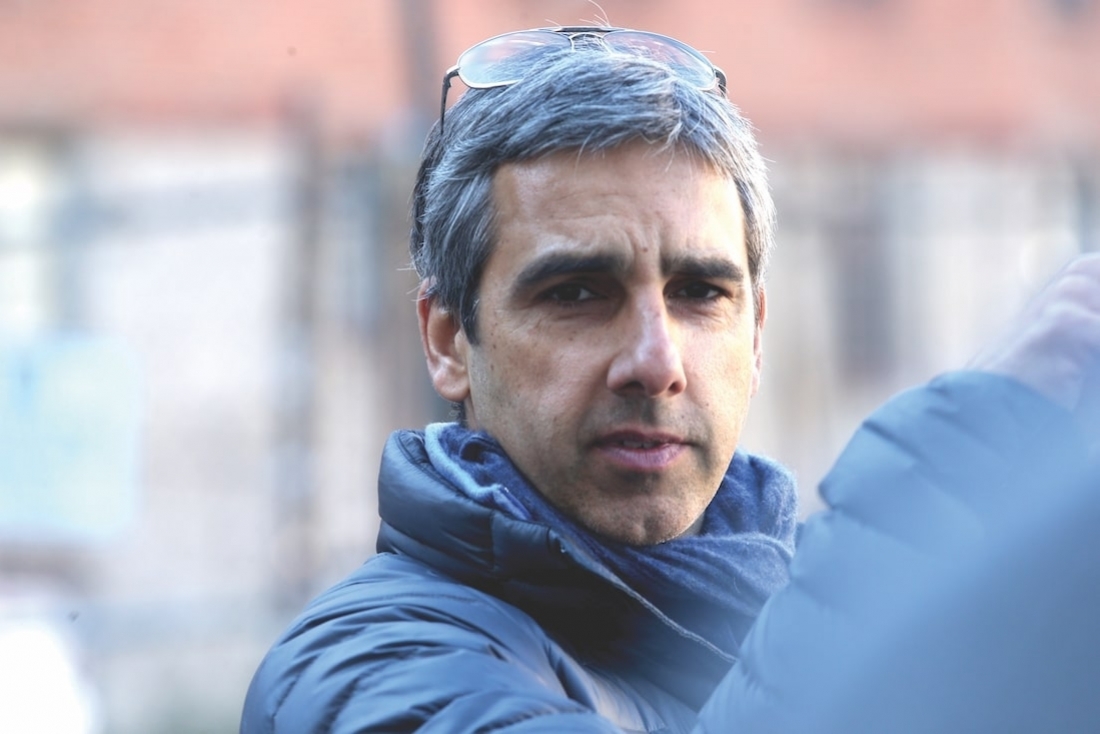

His vision through the lens translates every scene into visual poetry and that is one of the main reasons why I loved the film, Blue Valentine. Andrij Parekh is by far one of the most artistic directors of photography. He is experimental, and at the same time, simple in his approach. It’s this understated, yet powerful technique that makes him one of the most sought out DOP’s in Hollywood today. I had a chance to connect with him to understand more about his craft.
When did your romance with photography begin and when did you decide you would like to explore the world of film?
My ‘romance’ with photography and cinematography began rather late; it wasn’t until I took a year off from university and travelled the world, that I discovered the camera and what it can do; my first efforts were travelogues, and for part of that year away from school, I spent time in India for the first time, photographing a world that was entirely new to me. Although I’m half Indian (and half-Ukrainian), my father never found it that important to have strong ties to his ethnic home. Growing up in Minneapolis, Minnesota, my impression of India was only letters in blue airmail envelopes and samosas! So in many ways my romance with photography and cinematography is very closely tied to the ‘discovery’ of my Indian side. Once I understood that I was adept with the camera, I began taking film and photography classes, completed the two remaining years at universi- ty, and then I applied to NYU Graduate School. I was rejected once, tried again, and arrived in NY at the age of 25.
How does the photographer in you help the cinematographer in you and vice-versa?
I’m not sure I see the difference. Photography is making a picture and places its demands on a single moment in time. Cinematography is photography, multiplied by 24 frames a second— and so you have the chance to tell a living story. When I have a still camera, I’m much more aware of space; with the movie camera I’m aware of space and time and the interplay between the two.
As a cinematographer, what research do you do before working on a project?
I usually begin every project by walking with the director, looking at paintings. Living in New York, I’m blessed to have the Metropolitan Museum— it’s an incredible gift. It’s important for me to understand a director’s taste and aside from referencing other films, walking through the MET allows me to ‘see’ a director’s sense of taste and how it relates to his/her project. By standing in front of the same painting with someone, you can very quickly arrive at a common sense of colour, texture, contrast and emotion. It becomes shorthand for me, and I absorb the references that we are drawn to and it creatively creates an understanding. I also often watch and propose ideas from other films; I try to identify how a film that has already been exhibited can relate to the film we are embarking on, and why. Practically, location scouting is a crucial pre-production step for me. Locations are a cinematographer’s actor and they need to be cast with extreme scrutiny. Casting a good location (photographically) is 75% of my work; a good location ‘tells’ you where the light wants to come from, it informs your framing and movement. A good loca- tion is hugely important to me!
“When I have a still camera, I’m much more aware of space; with the movie camera I’m aware of space and time and the interplay between the two.”
How much of your own life is reflected in your craft?
That’s a tough one. Being a cinematographer is like being a merchant marine, but I’ve always loved travelling and exploring new places, so perhaps it’s the perfect profession for me!
What are your views on digital filmmaking and technologies like 3D? Where do you place yourself in that spectrum?
Digital is fine. It can be quite beautiful, but with that beauty comes a lack of discipline that I grew up with shooting film. When every frame costs money, one is forced to think a bit more about what one does in front of the cam- era. You rehearse, you discuss and you shoot. Now we just shoot first!
What aspects do you look for in a director and project before agreeing to the film?
A sense of taste and a command of the material. And trust.
What are your views on the kind of cinema coming out of India?
Dilwale Dulhania Le Jayenge was the last Hindi film I saw and I loved it, but that was almost 20 years ago!
What are the three essential details you would advise young cinematographers to look at before starting a film?
1) Love the material—if it doesn’t excite you, it will show.
2) Understand what your director wants and how you can serve the story. There is no ego in a good collaboration.
3) Embrace your fears and listen to your instincts.
Text Shruti Kapur Malhotra